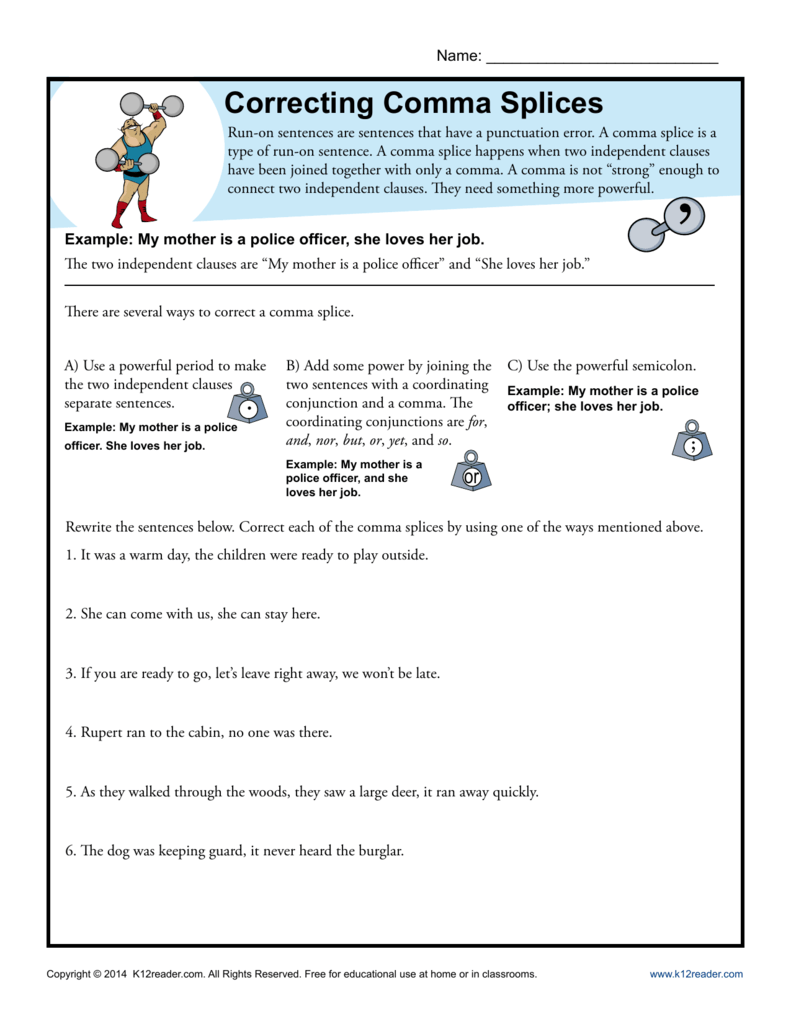
Leaving the comma in but adding a coordinating conjunctionĬommas can be used between two independent clauses when the clauses are joined by a coordinating conjunction:Į.g., I am drinking a lot of coffee, for I was up too late last night.Helpful tip: In some cases, to provide the above solutions with stronger flow and connection, you can add a transition word or phrase (with a comma) to the second clause:Į.g., She drank her tea too quickly as a result, she burned the roof of her mouth.

I was up too late last night.Į.g., I am drinking a lot of coffee today I was up too late last night. Replacing the comma with terminal punctuationīecause the clauses on either side of a comma splice are independent, the error can be fixed by replacing the comma with a period or a semicolon.Į.g., I am drinking a lot of coffee today.Using the above example, we can fix the error in the following ways: There are a few ways to resolve comma splices when they occur. While the ideas in the above sentence are somewhat connected in content, each clause is actually independent. Comma splices explainedĪ comma splice occurs when two independent clauses (complete sentences) are joined with a comma, as in the following sentence:Į.g., I am drinking a lot of coffee today, I was up too late last night. Both of these kinds of errors detract from the overall clarity of your writing because they create faulty sentences that contain more than one idea.Ĭorrecting these errors starts with identifying clauses within sentences, but it also relies on using conjunctions and/or punctuation that accurately reflect the relationship between the information you are presenting.


A run-on sentence occurs when multiple independent clauses are unpunctuated or lack connections in a single sentence, while a comma splice occurs when a comma is used to separate two independent clauses. Run-on sentences and comma splices are closely related errors. Printable version of Run-ons and Comma Splices (PDF).


 0 kommentar(er)
0 kommentar(er)
